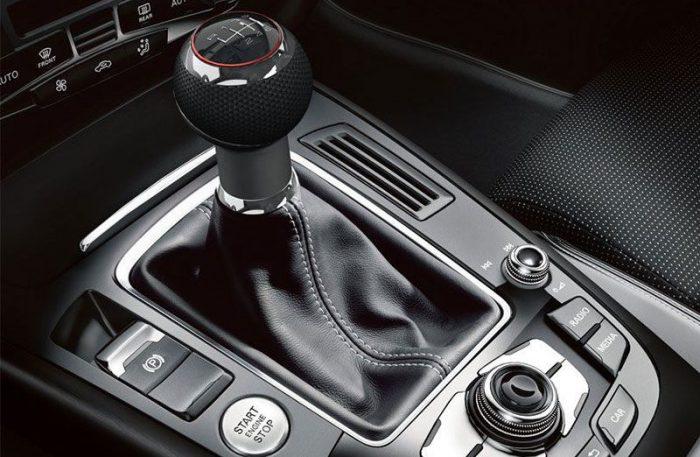Manual vs. Automatic Car Safety: Which One Is Safer?
What’s the most effective way to intrigue the car enthusiasts into a debate? Pop a question about anything related to the classic ‘manual versus automatic’! The topic of manual vs. automatic car safety could be another addition to that never-ending debate. What do you think? Which one could be the best option for keeping us safe on the road?
Manual vs. Automatic Car Safety: Which One Is Better?
Before deciding to buy a manual or automatic transmission, we need to understand the advantages and disadvantages of each type. Or understand why many drivers choose manual transmission cars, while many people, especially women driving in the city, choose automatic transmission cars. Surely each type of car will have its pros & cons.
Both the transmission types have fervent supporters who can produce plenty of logic in their favor. However, there is no solid data to settle a winner. Read the benefits and drawbacks of both types and choose yourself!
The case for automatic transmission
Most of the recent cars have this gearbox. Some manufacturers have ignored the stick shift for some of their models. Let’s see how much safe they are on the road:
Advantages
The symbols on the basic automatic gear are only P – Parking, R – Reverse, N – Neutral, and D – Drive. The driver does not need to control the clutch, just step on the accelerator and start. There is also no need to pay much attention to shifting gears to suit the speed and road conditions because everything is automated.
The automatic transmission is definitely the safer option if you are a novice driver. It does not require the driver to do much, reducing the chance of the car’s control in traffic. There’s no need to change gear, operate the clutch, and think about the braking or acceleration while watching for the traffic or traffic lights.

Auto cars are easier to maneuver. The gearbox has some safety mechanisms, lowering the chance of accidents. Unlike the manual, the chance of getting stuck somewhere because of mishandling of the clutch is absolutely zero.
The ‘Park’ or ‘P’ mode in the auto gearbox is a safety mechanism that you must appreciate. Putting the car in that mode virtually rules out the chance of rolling down from a slope even if you leave it unattended.
Disadvantages
Driving an automatic in the mountains is risky for less skilled drivers. If you don’t know anything about engine speeds, brake, or gears, you will probably ruin the transmission by not moving it to the right mode while ascending or descending a hilly road. For example, you may ruin the gearbox if you don’t shift the lever to 2 while climbing up a road. On the other hand, overheating the brakes will be a byproduct of leaving the lever in ‘D’ while driving down a slope.
You don’t have to concentrate much except for focusing on steering while driving an auto car. This could be bad in the sense that the driver can get too relaxed and lose focus on driving.
See more:
The case for manual transmission
The stick shift has a devoted fan following. Is it safer than the automatic? Let’s find out:
The good
Which car is safer depends on many factors. However, in general, although driving a manual transmission is more complicated, it ensures better control of situations. When driving a manual transmission, the driver must use both feet, the left foot controls the clutch pedal, and the right foot controls the brake and gas pedals.
In addition, the hand must also operate the gear lever to change gears to suit different speeds and operating conditions. Therefore, driving a manual vehicle will require more concentration from the driver due to many operations.
Many veteran drivers will swear for this gearbox because it offers more control. Skilled drivers like the fact that a manual car gives them options to handle unusual conditions such as avoiding a collision or riding a slippery road.

The bad
Operating a manual transmission seems to be doing lots of tasks at the same time. It won’t be a problem for someone experienced with a stick shift car, but the same can’t be said for someone inexperienced or aged. Age affects cognitive ability. So, older drivers find it more challenging to give that much attention to operating a manual car.
Unlike an automatic, it’s not easy to park a manual car on a slanted surface. You have to shift the gear to the parking brake and put it in either reverse or first. Otherwise, the car may roll away.
Watch more:
Conclusion
From the above discussion about the manual vs. automatic car safety, it seems that driving manual cars could be testing for older and novice drivers. Driving a manual vehicle warrants more attention, which is probably good because you don’t have the scope to eat a burger or fiddle with the phone. However, it might not be the best option for teenagers who don’t have the patience to master the stick shift. Otherwise, neither manual nor automatic transmission appears to have any conclusive safety advantage over the other.
To wrap up, you should also know that the safest car is one that combines good driver behavior, adherence to traffic laws, proper maintenance, and advanced safety features regardless of whether it is a manual or automatic transmission. It’s advisable to consider your driving skills, local traffic conditions, and personal preferences when choosing between manual and automatic cars.














